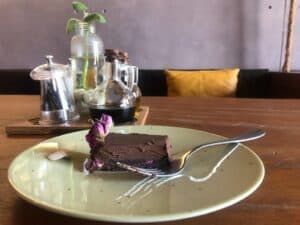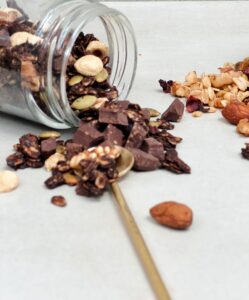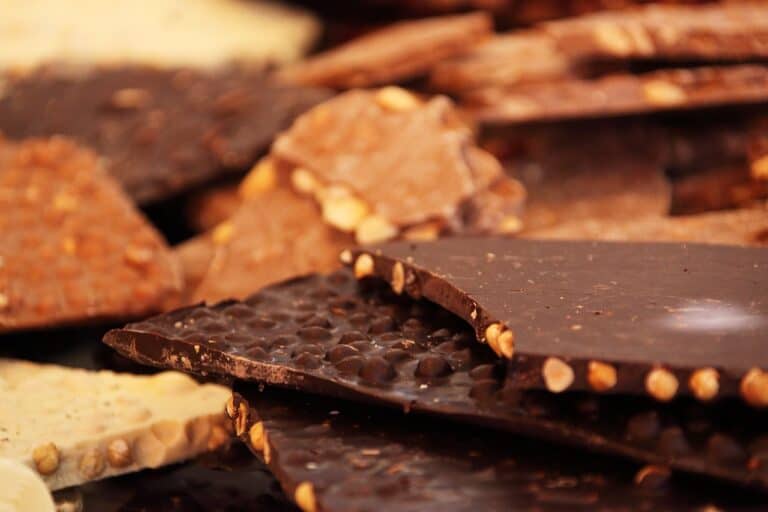When it comes to enjoying a delicious dessert, few things can rival the pleasure of tasting chocolate. Whether it’s creamy milk chocolates, rich dark chocolates, or artisanal craft chocolate, the experience is truly unparalleled. But have you ever wondered how to taste chocolate like a connoisseur, unlocking all the nuances and flavor notes hidden within each piece of chocolate?
In this guide, we’ll take you through the art of tasting chocolate step by step, from selecting high-quality chocolate to savoring it with all your senses. Get ready to indulge your taste buds and discover the world of chocolate flavor like never before.
The Importance of Chocolate Tasting

Before diving into the tasting process, it’s essential to understand why tasting chocolate is so important. Not all chocolate is created equal, and by learning how to taste, you can distinguish between good and bad chocolate. Quality chocolate is a world away from the mass-produced bars that dominate the market. By developing your chocolate-tasting skills, you’ll be able to appreciate the subtleties of flavor that well-made chocolate offers.
Gathering Your Chocolate
Gathering a diverse selection of chocolates is a crucial step in your chocolate-tasting adventure. Dark chocolate, in particular, serves as an excellent starting point due to its characteristic intense cocoa flavor and rich cocoa butter content. Dark chocolate offers a deeper and more complex taste profile compared to its milk chocolate counterpart, making it ideal for honing your taste buds.
However, the world of dark chocolate is vast, and you can further enrich your experience by trying different cocoa percentages, which range from mildly bitter to intensely dark. Additionally, don’t forget to explore chocolates originating from various regions across the globe. These chocolates often carry unique flavor nuances based on the specific cacao beans and processing methods employed, allowing you to embark on a flavorful journey around the world without leaving your tasting table.
Preparing for the Tasting

Preparing for the tasting is essential to ensure you get the most out of your chocolate experience. First and foremost, proper storage is crucial. Store your chocolates in an airtight container to prevent exposure to air and humidity, which can negatively impact their quality and flavor. Maintaining the right temperature is equally important. Chocolates should be stored at a cool, stable temperature to preserve their freshness and prevent melting or blooming.
Equally crucial is preparing your palate. Before tasting chocolate, avoid consuming strong flavors, such as spicy foods or heavily seasoned dishes. These strong tastes can overpower the subtle nuances of the chocolate. To cleanse your palate effectively, keep a palate cleanser like black pepper or a piece of bread handy. These neutral elements help reset your taste buds between chocolate samples, allowing you to fully appreciate the unique flavor notes of each piece. With the right preparation, you’ll be well on your way to a rewarding chocolate-tasting experience.
The Tasting Process
The tasting process is where the magic of chocolate exploration truly begins. It’s like unwrapping a gift, revealing the secrets hidden within each piece of chocolate. First, take a moment to visually assess the chocolate bar. Notice the color, which can range from deep brown to lighter shades, and the sheen, which indicates the quality of cocoa butter distribution. The texture is also crucial; it should be smooth and free from any imperfections, reflecting the craftsmanship that went into making it.
Then, engage your sense of smell by bringing the chocolate bar to your nose and taking a deep inhale. This step is akin to opening a treasure chest of aromas. Your olfactory receptors will detect a symphony of scents, which can include notes of earthiness, fruitiness, or even floral undertones. This aromatic preview sets the stage for the flavor journey ahead, offering a tantalizing glimpse into the complex and multifaceted world of chocolate.
Flavor Profiles and Tasting Notes
As you begin to eat chocolate, focus on the taste experience. Pay attention to the basic tastes like sweet, bitter, and even salty that chocolate can exhibit. Explore the flavor notes, which can range from fruity and nutty to floral and even reminiscent of stone fruit or dried cherries. By identifying these notes, you’ll uncover the richness of chocolate flavor.
Pairing Chocolate with Other Flavors

Pairing chocolate with other flavors is a delightful adventure for your taste buds. When you pair dark chocolate with red wine, the rich, deep cocoa notes of the chocolate beautifully complement the complex flavors of the wine, creating a harmonious and indulgent pairing. The bitterness of the dark chocolate can balance the wine’s tannins, enhancing the overall tasting experience.
On the other hand, the creamy sweetness of milk chocolate pairs wonderfully with a cup of coffee. The contrast between the smooth, chocolatey sweetness and the robust, slightly bitter coffee creates a delightful juxtaposition that elevates both the chocolate and the coffee, making each sip and bite a sensory delight.
These pairings go beyond just satisfying your cravings; they create a symphony of flavors in your mouth. Experimenting with different combinations of chocolate and complementary foods or beverages opens up a world of taste possibilities, allowing you to appreciate the versatility of chocolate and its ability to harmonize with a wide range of flavors.
Keeping a Chocolate Tasting Journal

Maintaining a chocolate tasting journal is more than just a practical habit; it’s a way to turn your chocolate exploration into a personal treasure trove of experiences. Imagine flipping through its pages and reliving the distinct moments when a particular chocolate left an indelible impression on your palate.
By diligently documenting the brand, type of chocolate, and flavor notes, you’re not just preserving memories; you’re creating a roadmap to your own evolving tastes. As you fill the journal, patterns will emerge, revealing your preferences and guiding your future choices. It’s akin to capturing the essence of your chocolate journey, one delectable discovery at a time.
Over time, this journal transforms into a trusted companion on your chocolate-tasting adventures. It’s more than just a record; it’s a source of inspiration and refinement. It helps you refine your discernment, enabling you to appreciate even the subtlest of nuances in different chocolates. Plus, it’s a great conversation starter when you share your chocolate experiences with friends and fellow enthusiasts.
Exploring Chocolate Varieties
The world of chocolate is a diverse and tantalizing one, offering a multitude of varieties to explore. Dark chocolate, with its intense cocoa flavor and minimal sugar, is known for its bold and sophisticated taste. On the other hand, milk chocolates, with their creamy texture and sweetness, provide a more indulgent experience. But beyond the mainstream options, there’s a whole universe of specialty and craft chocolate waiting to be discovered.
These chocolates often highlight unique cocoa bean origins, processing methods, and flavor profiles, allowing you to delve into a realm of chocolate artistry. By tasting these various chocolate types, you’ll embark on a sensory journey that unveils the intricacies and nuances of chocolate, deepening your appreciation for this delectable treat.
Final Thoughts: How to Taste Chocolate
Learning how to taste chocolate is a delightful journey that allows you to savor high-quality chocolate with all your senses. By following the steps outlined in this guide, you can unlock the full spectrum of chocolate flavors and become a true chocolate connoisseur. So, the next time you enjoy a piece of chocolate, remember to take your time, engage your senses, and savor every moment of this delectable experience. Happy chocolate tasting!
Other suggested articles:
- Chocolate as a Form of Self-care and Well-being
- The Therapeutic Benefits of Chocolate-making Workshops
- How To Taste Chocolate
- How To Make Thick Hot Chocolate
- How To Make Christmas Hot Chocolate
- How To Make Christmas Chocolate Chip Cookies
- How To Make Chocolate Truffles For Christmas
- How To Color Chocolate
- How Long Does Chocolate Last
- How Is Chocolate Made
- How Does Chocolate Affect The Brain
- How Do You Make Chocolate Ganache
- How Do You Drizzle Chocolate
- How Chocolate Chips Are Made
- How Are Cocoa Beans Harvested
- How Are Chocolate Covered Almonds Made
